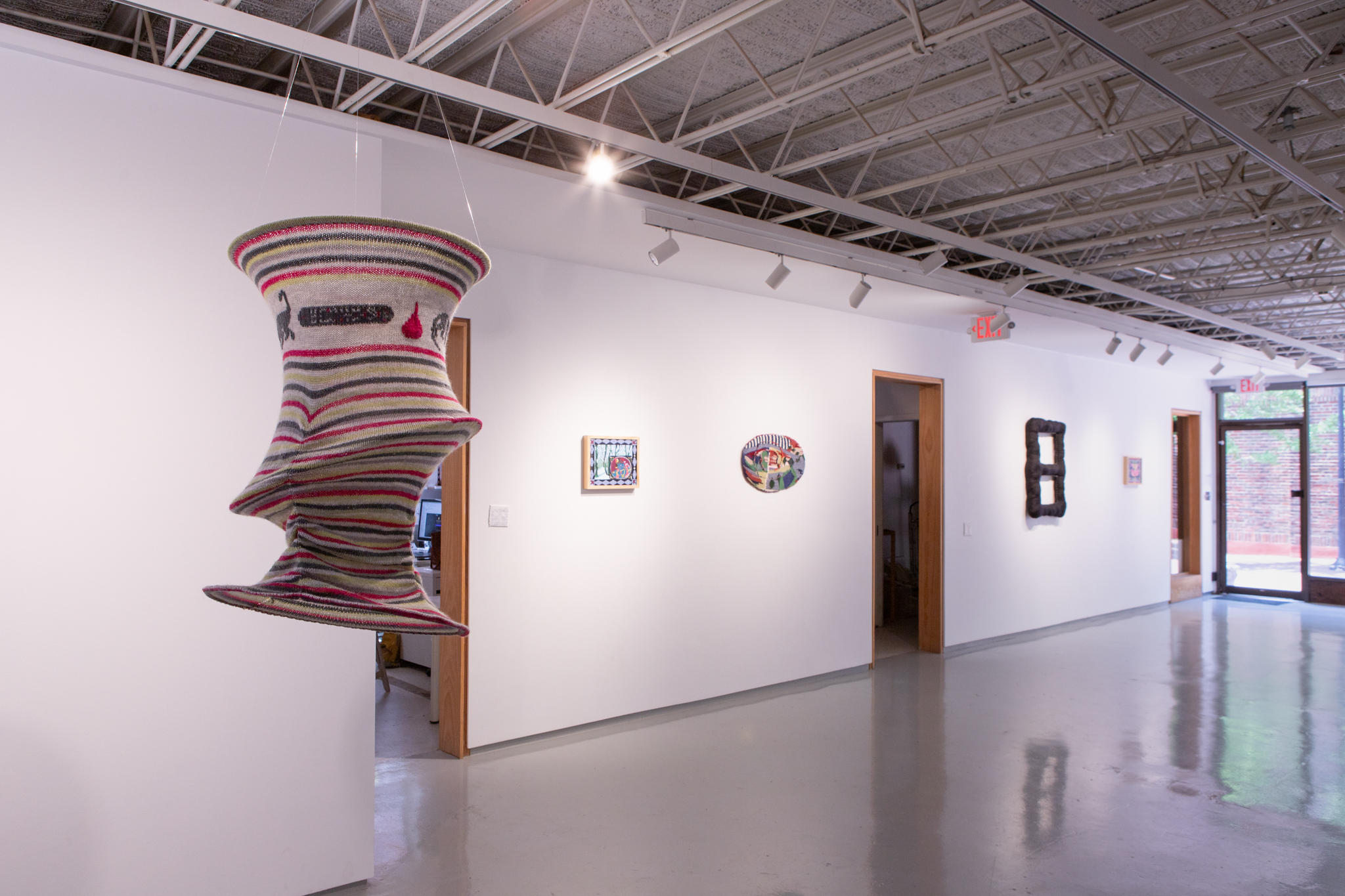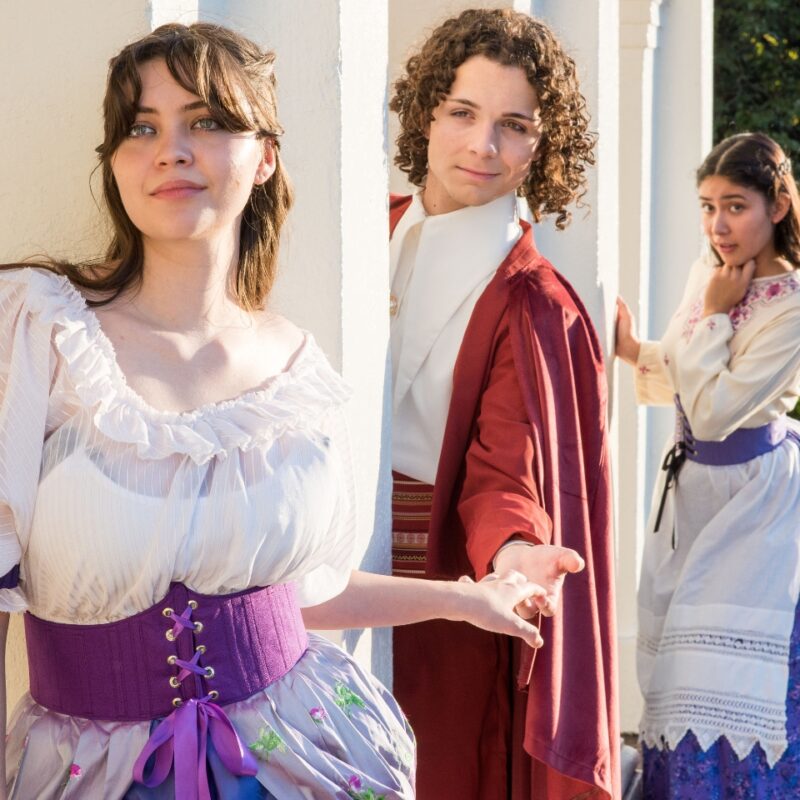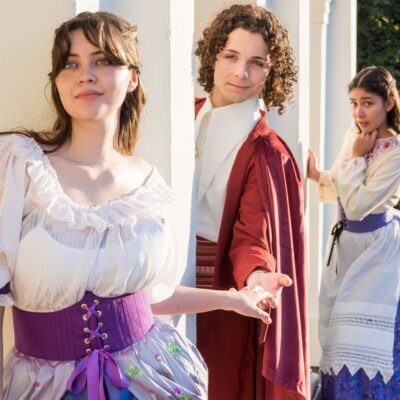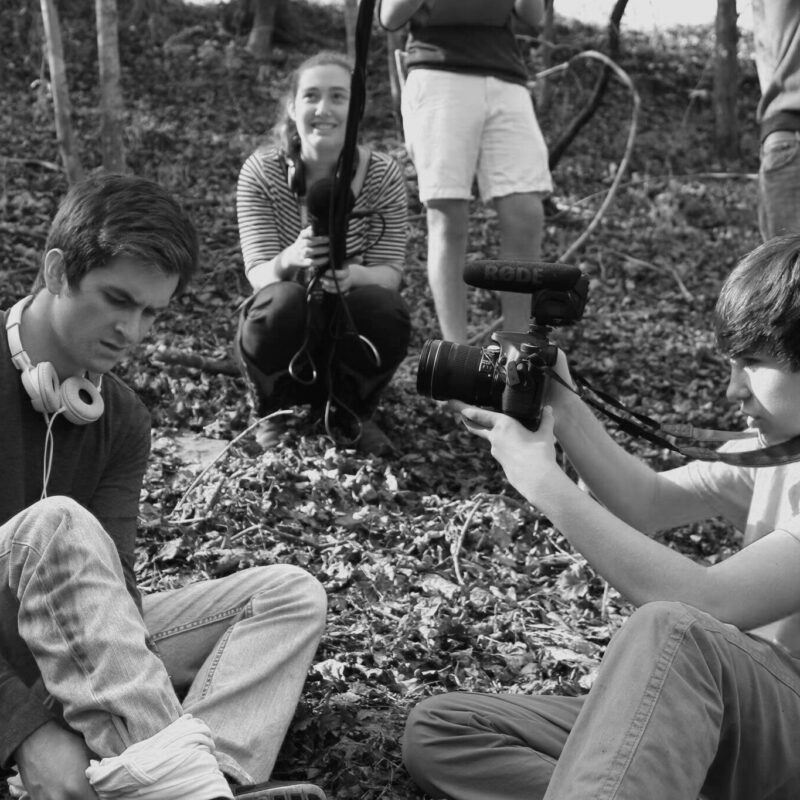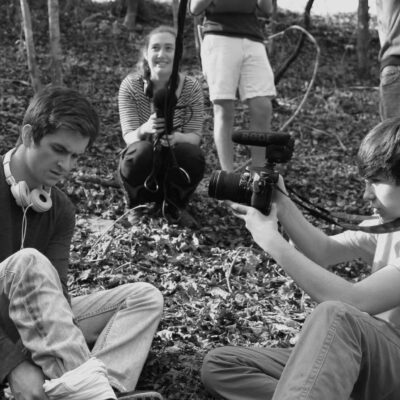In “one hand washes the other” at New City Arts, Vibha Vijay endows art with emotional import, incorporating secondhand fabric and materials belonging to family members—a practice that allows her to explore the associations these items hold. Vijay says a recent visit to India “really sparked a lot of the thought behind this work.”
Evident in “Maybe I’ll find a god in these woods,” is the search for meaning in Hinduism and the blending of cultures. The piece alludes to the story of Krishna’s death. Krishna, the god of protection, compassion, tenderness, and love is an avatar of Vishnu, the central deity in Hinduism. Krishna’s body was invulnerable except for the bottom of his foot.
One day, Krishna was resting in woods, meditating with his foot up and sole exposed, when a hunter mistook his foot for a deer and shot him with an arrow, killing him.
In Vijay’s piece, Krishna’s image is overlaid on top of a background of snow-covered woods. He’s not really in them, he hovers above like a thought bubble, and the woods are actually in Wales where Vijay was attending an artist’s residency. “It felt good to connect the woods and Krishna in a more positive joining of Indian deity and Northern woods,” says Vijay.
Krishna is rendered in the Tanjore style. Used to depict gods and idols, this style was developed in the late 17th century in south India. Tanjore works feature simple compositions, vivid color, and expanses of gold foil inlaid with glass beads and semi-precious gems. It has special meaning for Vijay as it was an art form practiced by her grandmother.
“TV watching on the terrace,” a hand-knit tubular hanging sculpture, immortalizes an event that occurred on Vijay’s recent trip back to India. One of the ubiquitous monkeys that populate the area where her relatives live, got onto their terrace and made off with the television remote. (It was eventually discovered on the roof.)
The sculpture’s crazily skewed shape recalls The Cat in the Hat’s hat and the mayhem inherent in that tale. “I found the shape interesting,” says Vijay, who hung it in space so people could see around it. “I liked how I ruched the stripes first and then added the rings and how the neatness of the stripes is interrupted by the manipulation of the form.” Encircling the top of the piece are three monkeys, a TV set, a remote, two eyes that are “our eyes watching the monkeys, and the eyes of the monkeys watching us as we watch TV,” and droplets that represent blood, because according to Vijay, there was a lot going on—“a lot of tussles, metaphorically.”
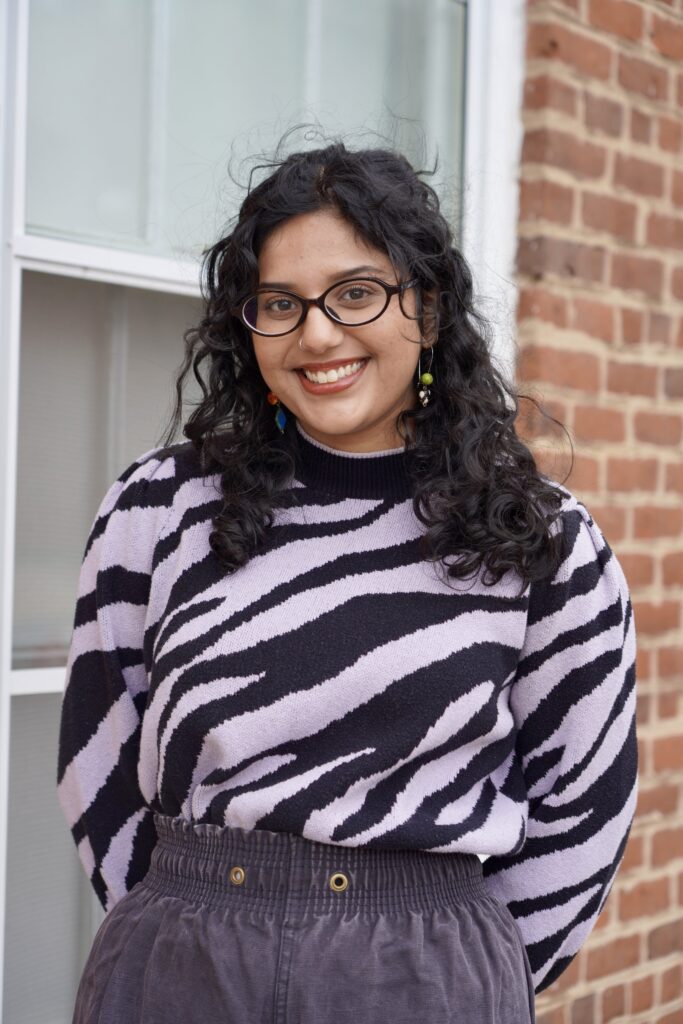
In “Again, but with permission,” the distinctive Tanjore jewel-studded gold foil is used, this time in a stand-alone fashion without religious figures. Vijay overlays red grid lines and a border on top of this curious glittering shape that’s stretched like a hide being dried. As a child, Vijay was drawn to her grandmother’s art studio, with its supply of dazzling beads and gems, which she helped herself to, gluing them onto random things. “I was interrupting her work and intruding on her space,” says Vijay. “But now these things have been passed on to me. I’m using them again, but, this time, with permission.”
“Around $20 in gold” is made from Vijay’s great-grandmother’s sari. The sari originally featured a border of woven gold-dipped thread. When saris like this wear out, people detach the border and sell for the gold that is then melted off. This is what Vijay’s great-grandmother did. “When I asked her how much money she got for it, she said, ‘around 20 U.S. dollars.’” For Vijay, the body of the sari, being her great-grandmother’s, holds more sentimental value than a mere 20 dollars. With the remaining silk, she made a rectangular, rounded soft sculpture with two negative spaces that are the same size as her paintings. This allowed her to frame her great-grandmothers’ sari conceptually.
For “Big old hoop,” Vijay repurposes an oval embroidery hoop to use as a loom. The warp of the weaving (lengthwise direction) is from one sweater, the weft (crosswise direction) is a combination of fibers Vijay’s had for years. The spiral in the center of the piece is yarn that Vijay carded herself and hand-spun. These materials have been used many times, with the yarn having been in various projects, unraveled and then used again.
With her show, Vijay has raised provocative questions about family, possessions, and cultural heritage. She shows us that, passed from hand to hand, even scraps of fabric with no real monetary value gain substance and importance by their contact with the people who owned them, wore them, and used them. A person of Indian descent, but born and raised in Maryland, Vijay presents her works as a link to her rich cultural legacy. “It’s been interesting as an adult to reconnect and figure out what I want to pull from my culture and religion and bring into my independent life,” Vijay says.
Supplied photos
